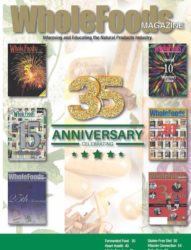A new report published in the Journal of Food Science casts doubt on whether some common food ingredients are pure and of a high quality.
The authors—Jeffrey C. Moore, Ph.D., and Markus Lipp, Ph.D., from the U.S. Pharmacopeial Convention (USP) and John Spink, Ph.D., of Michigan State University—reviewed 660 journal articles and other reports and input the findings into a USP database dedicated to ingredients. Then, the team came up with a list of the seven most adulterated food ingredients: olive oil, milk, honey, saffron, orange juice, coffee, and apple juice.
The fraudulent ingredients may have been developed intentionally or were adulterated for economic gain, says a USP Expert Panel. In some cases non-authentic components were added that are not often detected in traditional analysis. But in 95% of cases, authentic substances were partially or completely removed and/or replaced without the buyer knowing it. Despite this, the authors feel the issue is more a problem of economics and not really a safety threat. An example is Japanese star anise added in lieu of Chinese star anise, or spices partially replaced with lead tetraoxide or lead chromate to imitate the color of a higher quality spice.
In developing the database, USP did not differentiate between natural, certified organic food and conventional ingredients because it felt the mechanisms for adulteration are similar. An adulterant like melamine could be added to milk to falsify protein levels regardless of whether it is conventional or organic. Organic and natural ingredients are indeed sourced from around the globe, which can provide opportunities for adulteration to happen.
Published in WholeFoods Magazine, June 2012 (online 4/19/12)










